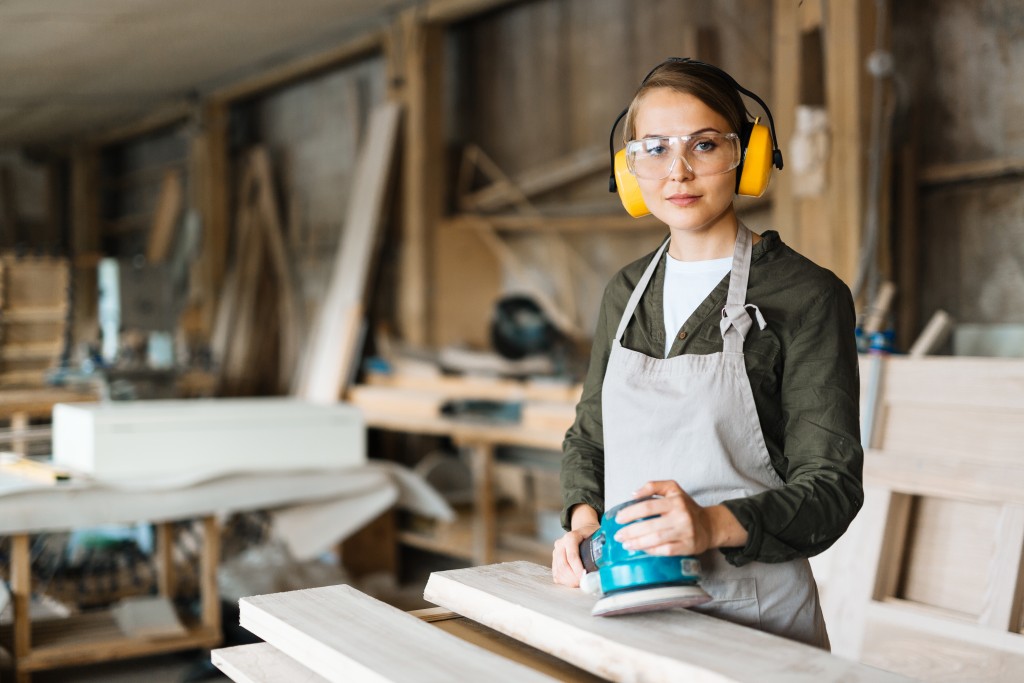Anyone who’s ever worked with drywall knows that the process creates dangerous amounts of dust. Sanding creates a thick cloud of fine dust that affects safety and visibility. Even sanding furniture creates the same amount of dust, even if the cloud isn’t as thick.
Whether you are working on home interior design or restoring old furniture, it’s essential to follow a few safety tips. Here are a few to get you started.
1. Wear personal protective gear
Sanding plaster and joint compounds creates ultrafine particulates of talc and gypsum that tend to linger in the air. Some kinds of joint compounds also contain silica. Silica, if inhaled, can lead to respiratory diseases such as lung cancer and silicosis.
But that doesn’t mean that silica-free joint compounds are safer. Inhaling drywall dust can lead to permanent eye and lung damage and exacerbate preexisting respiratory conditions. Always wear personal safety gear such as a respirator to cover the nose and mouth and airtight goggles to protect the eyes.
You should also cover your body when sanding drywall. A long-sleeved shirt will protect your skin from irritants in the dust. You should also wear a cap or a hat to keep the dust out of your hair.
2. Secure interior work areas
You need to prepare the work area for sanding work to minimize the effects of dust and other irritants. For starters, you should turn off climate control systems such as air conditioning and seal vents to prevent dust from entering the ventilation system.
Many contractors use a box fan to blow air away from the room while sanding. Position the fan against an opening to blow the air out. That removes some floating particles as you work.
3. Clean the floor

Drywall and plaster workers need to scatter sweeping compounds all over the floor. The compound holds down fine dust down, making it easier for the cleanup crew to clean the work area. Make sure to follow the usage directions for using the compound. You may have to 24 hours after the initial application for maximum effectiveness.
After 24 hours, use a heavy-duty vacuum to clean the area. Make sure that the vacuum has a built-in filter. Do not use a regular vacuum since the fine dust can clog it and ruin the machine.
4. Wipe the surfaces
Use a damp cloth to wipe the drywall from top to bottom. That ensures that all dust is removed before paint is applied, as the dust affects paint adhesion and leads to flaking.
Wait for the surface to dry before starting painting. Use the damp cloth to clean the doors and windows, as well as horizontal surfaces such as ceiling fan blades, switches, and windowsills. After wiping all surfaces, vacuum the floor again with a heavy-duty vacuum.
Ultrafine dust particles are extremely harmful if inhaled or ingested. We all know that construction work is full of dangers. You have to work with potentially harmful substances: irritants in the drywall, chemicals in the wood finish, even naturally occurring contaminants such as mold, fungus spores, and wood sap. If you’re thinking of doing a renovation project, then you need to take the necessary precautions to keep everyone safe.

